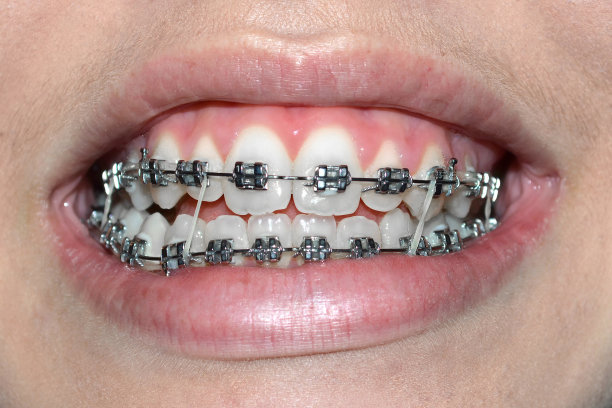Essential Guidelines to Ensure Successful Dental Filling and Promote Long Term Oral Health Care
Summary: Dental fillings are a common procedure that plays a crucial role in maintaining oral health. However, the success of this treatment is largely determined by adherence to essential guidelines. This article outlines four key areas: selecting the right dental material, following post-filling care instructions, understanding the importance of regular dental check-ups, and maintaining comprehensive oral hygiene practices. Each of these components contributes to the longevity of the filling and overall dental health. By implementing these guidelines, patients can prevent future dental issues and support their long-term oral care strategy.
1. Choosing the Appropriate Dental Material

The choice of material used for dental fillings is vital for their effectiveness and longevity. Dentists often recommend various materials such as amalgam, composite resin, gold, or porcelain, each with its unique properties and advantages. Amalgam fillings are known for their strength and durability, making them suitable for back teeth that endure significant chewing pressure. On the other hand, composite resin fillings are popular for their aesthetic appeal, allowing for the natural-looking restoration of front teeth.
When selecting a dental material, it is essential to consider factors such as location of the filling, patient鈥檚 dental health, and any allergies the patient may have. The dentists expertise in assessing these factors can guide the selection process to ensure the most appropriate filling material is chosen.
Another crucial aspect to consider is the longevity of the filling material. For instance, while composite resins may require replacement sooner than amalgam fillings, they are indispensable for those who prioritize aesthetics. Understanding these differences can help patients make informed decisions during their dental appointments.
2. Adhering to Post-Filling Care Instructions
After receiving a dental filling, following the dentists post-care instructions is essential for the success of the treatment. Initially, patients may experience sensitivity to temperature change or pressure. It is advisable to avoid extremely hot or cold foods and drinks for the first 24 hours after the procedure. Additionally, sticking to softer foods can help minimize discomfort and protect the filling.
Maintaining neutrality towards the treated area is also important. Chewing on the side of the mouth with the new filling should be delayed until the dentist confirms that it has fully set. This patience can significantly influence the longevity and stability of the filling, preventing unnecessary damage.
Patients should also be aware of the importance of monitoring their symptoms in the days following the filling. If pain persists or if the filling feels uneven, consulting the dentist promptly can help address any complications that may arise. This proactive approach ensures that the filling is functioning correctly and can prevent further dental issues.
3. Importance of Regular Dental Check-Ups
Regular dental check-ups are a cornerstone of long-term dental health, particularly after receiving a filling. These appointments allow dentists to monitor the condition of the filling and the surrounding teeth, ensuring everything is in proper order. Early detection of issues such as decay or damage can lead to timely interventions, ultimately saving the patient from more complicated procedures in the future.
During check-ups, dentists can also provide personalized advice on maintaining oral health. They may offer insights on nutrition, brushing techniques, and the use of dental products that could further protect the filling and surrounding enamel. By understanding the complexities of dental care, patients can actively participate in their health decisions.
Ultimately, regular dental visits also serve to reinforce the importance of preventive care. This habit not only helps in maintaining the integrity of existing fillings but also contributes to a comprehensive oral health strategy, paving the way for a healthier mouth overall.
4. Maintaining Comprehensive Oral Hygiene Practices
To promote long-term oral health, maintaining regular and comprehensive oral hygiene practices is vital. This includes brushing at least twice a day with fluoride toothpaste and flossing daily to remove plaque and food particles. Such practices are essential in preventing decay around fillings and ensuring the longevity of dental restorations.
In addition to basic hygiene, the possibility of using mouth rinses that target plaque and bacteria should also be considered. These additional products can provide a higher level of protection for both fillings and natural teeth, especially in patients who are prone to cavities.
Lastly, its beneficial to understand the impact of diet on oral health. Reducing the intake of sugary snacks and acidic beverages can significantly minimize the risk of decay and wear on dental materials. Encouraging good eating habits helps in preserving fillings and supporting overall oral health.
Summary:
The significance of adherence to essential guidelines when it comes to dental fillings cannot be overstated. By thoughtfully selecting dental materials, strictly following post-care instructions, committing to regular dental check-ups, and maintaining diligent oral hygiene practices, patients can ensure the longevity of their fillings and promote overall oral health. These detailed efforts not only reinforce the success of individual treatments but also strengthen long-term dental health strategies.
This article is compiled by Vickong Dental and the content is for reference only.



